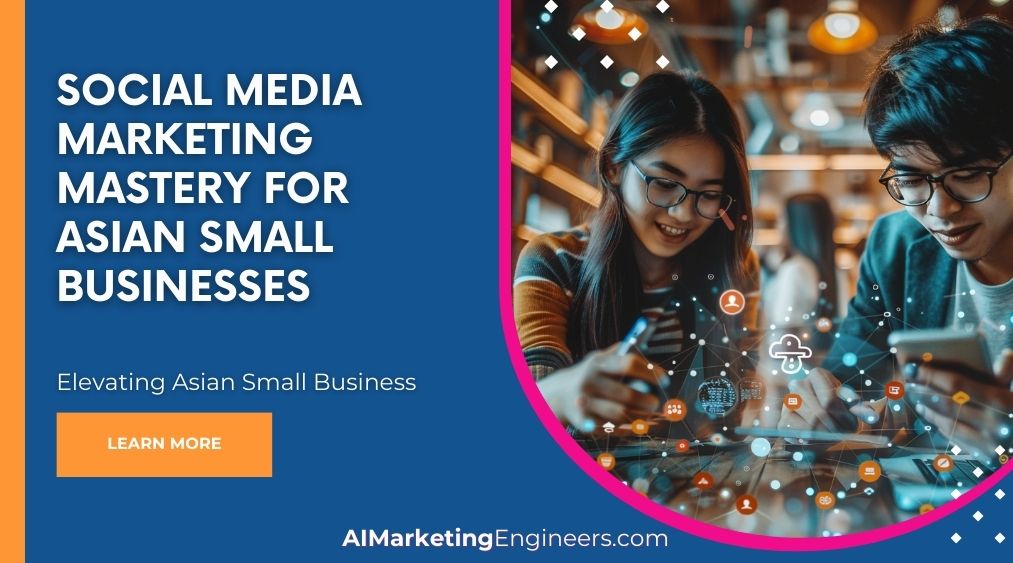Key Takeaways
✅ Emphasize Flexibility and Adaptability: Embracing flexible work arrangements and adapting to new challenges can improve the balance between professional and personal life.
✅ Prioritize Self-Care and Effective Time Management: Setting realistic goals and utilizing productivity tools enhance overall well-being and prevent burnout.
✅ Integrate Work and Personal Life: Aligning personal values and professional goals can lead to a more seamless and fulfilling life experience.
Introduction
How can we truly balance our personal and professional goals in today’s fast-paced world? Navigating work-life integration is not just about splitting time equally between work and home; it’s about blending them harmoniously to enhance overall well-being and productivity. This article dives into the strategies that promote a holistic approach to work-life balance and showcases the benefits of integrating our passions with our careers. Join us as we explore actionable insights and innovative solutions to navigate this crucial aspect of life.
Top Statistics
| Statistic | Insight |
|---|---|
| 65% of job seekers prioritize work-life balance over salary and benefits. | This statistic underscores the critical importance of work-life balance for job seekers, making it a top consideration during their job search, even over salary and benefits. |
| Over 50 million people left their jobs in 2022, citing lack of work-life balance or flexibility as a major reason. | A startling figure that highlights how an inflexible work environment can lead to high turnover, emphasizing the need for companies to offer flexibility. |
| More than half of Millennial and Gen Z workers who quit cited either lack of work-life balance or lack of flexibility as the reason. | Millennials and Gen Z value work-life balance and flexibility more than previous generations, pointing to a cultural shift in the workplace that employers need to recognize and adapt to. |
| Offering accommodations like telecommuting and flex schedules helps workers tailor their schedules to fit their personal lives. | Companies that provide these accommodations see better employee satisfaction and productivity, as workers can better manage their personal and professional responsibilities. |
| Work-life integration improves employee retention by creating a work environment that respects and accommodates individual life circumstances. | An approach to work-life integration that respects personal life not only boosts retention but also fosters a committed and motivated workforce. |
Redefining Work-Life Relationship With Integration in Mind
Work-life integration is a holistic approach that blends personal and professional needs. Unlike the traditional work-life balance concept, it does not bifurcate work and life, but rather sees both as intertwined. This mindset recognizes the diverse roles individuals play outside of work and promotes navigating both professional and personal domains through compromise and synergy.
Benefits of Work-Life Integration
Embracing work-life integration can have multiple upsides. It can enhance employee engagement, boost productivity, help attract and retain talent, and foster better mental health. Moreover, it nurtures a positive organizational culture by reducing stress and burnout, thereby improving performance.
Strategies for Achieving Work-Life Integration
Working With a Purpose in Mind: Clearly defined goals for both work and personal life offer direction and motivation.
Converging Work Instead of Dividing: Combining work and personal life can be simpler; for instance, taking work calls remotely while on vacation.
Identifying Your Productive Hours: Schedule personal and professional tasks during your peak productivity hours to improve efficiency.
Creating a Routine: A well-structured routine provides predictability, making it easier to balance both realms.
Embracing Remote Work and Flexibility: Remote work offers greater control over daily routines and allows for personal commitments.
Taking Advantage of Technology: Use tech tools to manage schedules and tasks, making life easier.
Delegating and Seeking Support: Share household chores or seek assistance to balance responsibilities.
Communicating Effectively: Open dialogue with employers and family about needs and commitments ensures clarity.
Saying No When Necessary: Recognizing when to say no helps prevent overcommitment and burnout.
Loving What You Do: Find passion in work, which can make integration more seamless.
Establishing Meaningful Boundaries
A "family-first culture" helps working parents blend responsibilities more naturally, perhaps by involving children in the workday. Clear agendas for meetings promote efficiency, minimizing unnecessary gatherings.
Organizational Support for Work-Life Integration
Flexible Work Arrangements: Offering flexible hours, remote and hybrid work options caters to diverse employee needs.
Transparent, Open Communication: Establish channels to discuss work hours, deadlines, and deliverables transparently.
Measure Results, Not Hours: Focus on outcomes over hours worked, empowering efficient time management.
Training and Development: Equip managers and employees with skills to navigate work-life integration successfully.
Provide Wellness Programs: Wellness initiatives focusing on physical and mental well-being, such as fitness classes or Employee Assistance Programs (EAPs), can make a significant difference.
Encourage Time Off: Promote a culture that values taking vacation days and avoiding work outside of standard hours.
In essence, work-life integration is a strategic choice for organizations aiming to foster a thriving and sustainable workplace. By implementing these strategies and fostering a supportive culture, employees are better positioned to achieve harmony between their personal and professional lives. This approach leads to improved job satisfaction, overall well-being, and a more engaged workforce.

AI Marketing Engineers Recommendation
Recommendation 1: Implement Flexible Work Arrangements: To effectively navigate work-life integration, consider offering flexible work arrangements. According to a 2022 Gartner survey, 82% of companies plan to allow employees to work remotely at least some of the time as a post-pandemic norm. Flexible scheduling can not only improve morale but also enhance productivity by 13%. Prioritize flexibility to align with employees' personal goals while maintaining professional productivity.
Recommendation 2: Foster a Culture of Well-being: Supporting work-life integration through well-being initiatives is crucial. Recent trends indicate a growing emphasis on mental health in the workplace. A report by Deloitte found that 80% of employees consider well-being programs when choosing an employer. Strategic investments in wellness programs, such as mental health days and stress management workshops, can help employees balance their personal and professional lives more effectively.
Recommendation 3: Utilize Digital Collaboration Tools: Leveraging digital tools can greatly assist in navigating work-life integration. Platforms like Slack, Microsoft Teams, and Asana offer seamless communication and project management, reducing the stress of constant email checks and helping maintain a clear line between work and personal time. According to McKinsey, companies using digital collaboration tools see a 20-30% increase in productivity. Embrace these tools to support a balanced, integrated work environment.
Relevant Links
- Learn to Target Messages More Effectively
- Work-Life Integration vs. Balance: The New Era
- Strategies for a Balanced Life and Work
- Exploring Remote Work Benefits
- Wellness Programs and Mental Health
Conclusion
Navigating work-life integration is more than a modern workplace trend—it's a necessary strategy for both personal and professional fulfillment. By blending the realms of work and personal life, employees can find synergy rather than conflict, leading to enhanced engagement, productivity, and mental well-being. Embracing flexibility, leveraging technology, and establishing clear routines are key steps towards achieving this balance.
Organizations have a pivotal role in fostering a culture that supports work-life integration. Offering flexible work arrangements, promoting wellness programs, and shifting the focus to outcomes rather than hours can make a significant difference. These measures not only improve employee satisfaction but also help organizations retain top talent.
In today's fast-paced world, work-life integration is not just beneficial—it's essential. By implementing the strategies discussed, both individuals and organizations can create a more harmonious, productive, and sustainable future.

FAQs
Question 1: What is work-life integration?
Answer: Work-life integration refers to the ability to manage and balance personal and professional responsibilities effectively, ensuring that both aspects of life are fulfilling and complementary.
Question 2: Why is work-life integration important?
Answer: Work-life integration is crucial because it directly impacts overall well-being, job satisfaction, and productivity. It helps individuals maintain a healthy balance between their personal and professional lives, leading to better mental and physical health, stronger relationships, and increased job performance.
Question 3: What are the key elements of work-life integration?
Answer: The key elements include setting clear boundaries, prioritizing personal and professional goals, managing time effectively, and maintaining open communication with family, friends, and colleagues.
Question 4: How do I prioritize my personal and professional goals?
Answer: To prioritize, identify your core values and what gives you a sense of purpose. Align your goals with these values and allocate time and resources accordingly. Regularly assess and adjust your priorities as needed.
Question 5: What strategies can I use to manage my time effectively?
Answer: Effective time management involves setting realistic schedules, using tools like calendars and to-do lists, and learning to say "no" to non-essential tasks. It is also essential to allocate time for self-care and relaxation.
Question 6: How can I maintain open communication with family, friends, and colleagues?
Answer: Open communication involves being transparent about your needs, expectations, and limitations. Regularly check in with family and friends, and establish clear boundaries with colleagues to ensure a healthy work-life balance.
Question 7: How do I handle conflicting work and personal responsibilities?
Answer: When faced with conflicting responsibilities, prioritize based on urgency and importance. Communicate with all parties involved, and seek support from colleagues, family, or friends if needed.
Question 8: What are some common challenges in achieving work-life integration, and how can I overcome them?
Answer: Common challenges include setting boundaries, managing time, and dealing with guilt or stress. Overcome these by setting realistic expectations, practicing self-care, and seeking support from others.
Question 9: How can I measure the success of my work-life integration efforts?
Answer: Measure success by tracking your progress toward personal and professional goals, assessing your overall well-being, and evaluating the quality of your relationships. Regularly reflect on your strategies and make adjustments as needed.

Academic References
- SHRM. (2023). From Work/Life Balance to Work/Life Integration. This article explores the theory of work-life integration, emphasizing the importance of blending rather than separating personal and professional needs.
- IHRIM. (2022). From Work-Life Balance to Life-Work Integration. This paper discusses the technological and societal shifts driving the move from work-life balance to an integrated life-work structure, highlighting how these trends blur the lines between personal life and work.
- ResearchGate. Work–Life Integration. This resource examines the evolution of work-life strategies in large companies and the critical role these initiatives play in workforce management and employee satisfaction. [PDF]
- SHRM. (2023). From Work/Life Balance to Work/Life Integration. A holistic approach is presented which seeks to harmonize personal and professional life for a more fulfilling existence.
- SHRM. (2023). From Work/Life Balance to Work/Life Integration; IHRIM. (2022). From Work-Life Balance to Life-Work Integration. These sources explore the adoption of new workplace strategies, such as remote and hybrid models, aimed at fostering better work-life integration and enhancing employee well-being.










